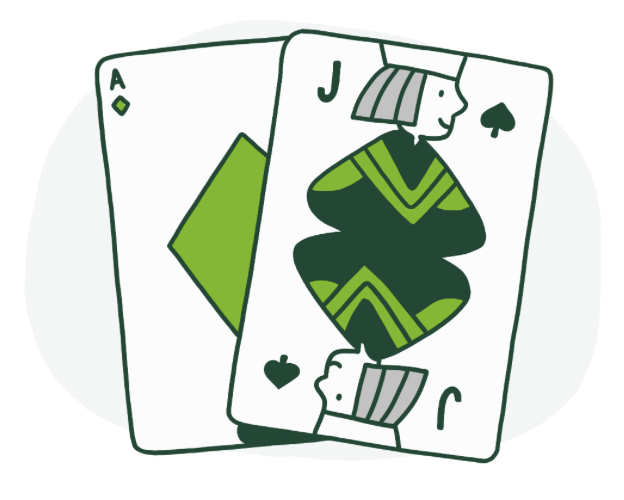Create a hand with a higher total than the dealer’s without going over 21.
Blackjack: a two-card hand containing an Ace and a 10-value card, totaling 21.
Bust/Break: a hand totaling over 21, automatically resulting in a loss.
Soft hand: a hand with an Ace that can be valued at either 1 or 11. With a soft hand, you cannot break or bust if you hit or take a card.
Hit or Draw: to be dealt another card.
Stand: to not be dealt another card.
Double Down: to double your original bet and commit to standing after taking only one more card.
Split: If you’re dealt two cards of the same value, you can split your original hand into two separate hands. This requires an additional, equal bet. No blackjack payouts occur in hands that have been split.
Surrender: If you don’t like your first two cards, you can surrender. The dealer takes half of your original bet and your hand is discarded. You can’t surrender when the dealer has Blackjack.
Insurance: If the dealer’s exposed card is an Ace and a player has Blackjack, they will be offered the opportunity to take “Even Money” which will be paid 1-1. Player hands which are not Blackjack can take Insurance, which is a side bet and is up to half their original wager. When the dealer checks the hole card, if it is a 10 value then insurance is paid 2-1 and the original wager loses. If it is any other value, Insurance loses, and the hand is played as usual.

Contrary to popular belief, the goal of the game is not to get as close to 21 as possible, but rather to beat the dealer.
You compete against the dealer, not other players.
You win if the value of your hand is higher than the dealer’s without going over 21.
You win if a dealer busts (goes over 21).
A table limit is the minimum and maximum bet you can make.
Table limits are posted on all games. Pay attention to the limits when setting a budget.
A winning wager is paid 1 to 1.
Blackjacks are paid at 3 to 2 or 6 to 5. The odds will be listed on the table.
Even making the statistically correct play does not ensure a winning outcome. You still can’t control which cards are dealt on any given hand.
Disclaimer: This game guide is meant as an introduction. The official regulations for Massachusetts electronic gaming devices can be found at massgaming.com/regulations/table-games-rules/.